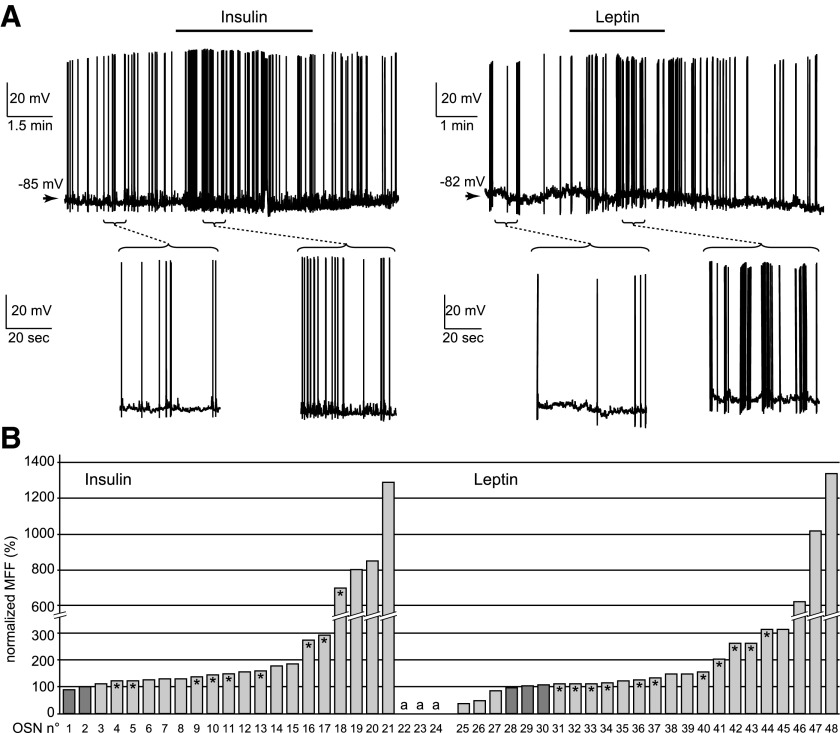FIG. 2.
Insulin and leptin increase the firing frequency of OSNs. A: the spontaneous activity of 2 OSNs was recorded in perforated patch-clamp configuration under current-clamp mode. Within 30 s of perfusion, insulin increased the mean firing rate of the 1st OSN (left) from 0.3 to 1.0 Hz and leptin increased the mean firing rate of the 2nd OSN (right) from 0.6 to 1.9 Hz. Both cells recovered during the drug washout (left: to 0.3 Hz within 30 s; right: to 0.5 Hz within 2 min). The brackets mark the periods enlarged below each recording. B: for each neuron, the mean firing frequency (MFF) recorded during insulin (left) and leptin (right) perfusion was normalized to the control frequency (100%). Insulin perfusion had a stimulating effect in 19 neurons (3–21), made the firing appear in 3 silent neurons (22–24, marked as “a”), and did not change the firing frequency in 2 cells (1 and 2). Leptin perfusion had a stimulating effect in 18 neurons (7–24), reduced the firing frequency in 3 neurons (1–3), and had no effect on 3 others (4–6). *, a recovery of ≥20% for that cell. Less recovery was observed for the cells showing the most profound modulation by insulin (19–24) or leptin (45–48).

